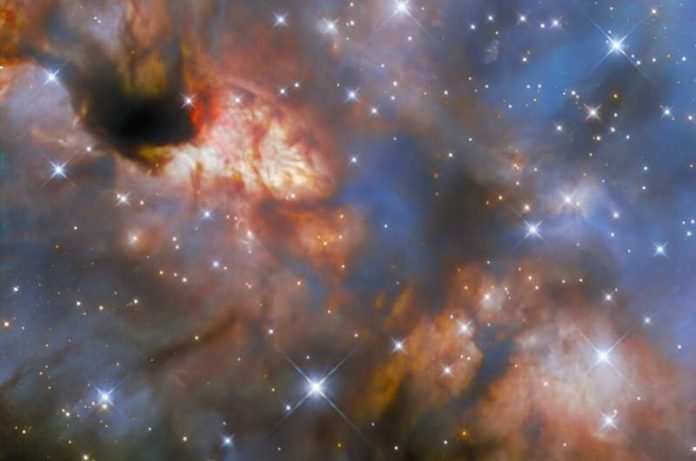
This image from the NASA/ESA Hubble Space Telescope is teeming with color and activity.
It features a relatively close star-forming region known as IRAS 16562-3959, which lies within the Milky Way about 5,900 light-years from Earth in the constellation Scorpius.
Observations from Hubble’s Wide Field Camera 3 make up this image. Its detailed nuance of color is the result of four separate filters.
These thin slivers of highly specialized material can slide in front of the instrument’s light sensors, allowing very specific wavelengths of light to pass through with each observation.
This is useful because certain wavelengths of light can tell us about the region’s composition, temperature, and density.
At the center of the image, IRAS 16562-3959 likely hosts a massive star—about 30 times the mass of our sun—that is still in the process of forming.
The shadowy clouds appear dark because there is so much light-obscuring dust blocking the near-infrared wavelengths of light Hubble observed.
However, near-infrared light does leak out mainly on two sides—upper left and lower right—where a powerful jet from the massive protostar cleared away the dust.
Multi-wavelength images like this incredible Hubble scene help us gain a better understanding of how the most massive, brightest stars in our galaxy form.
Source: NASA.



